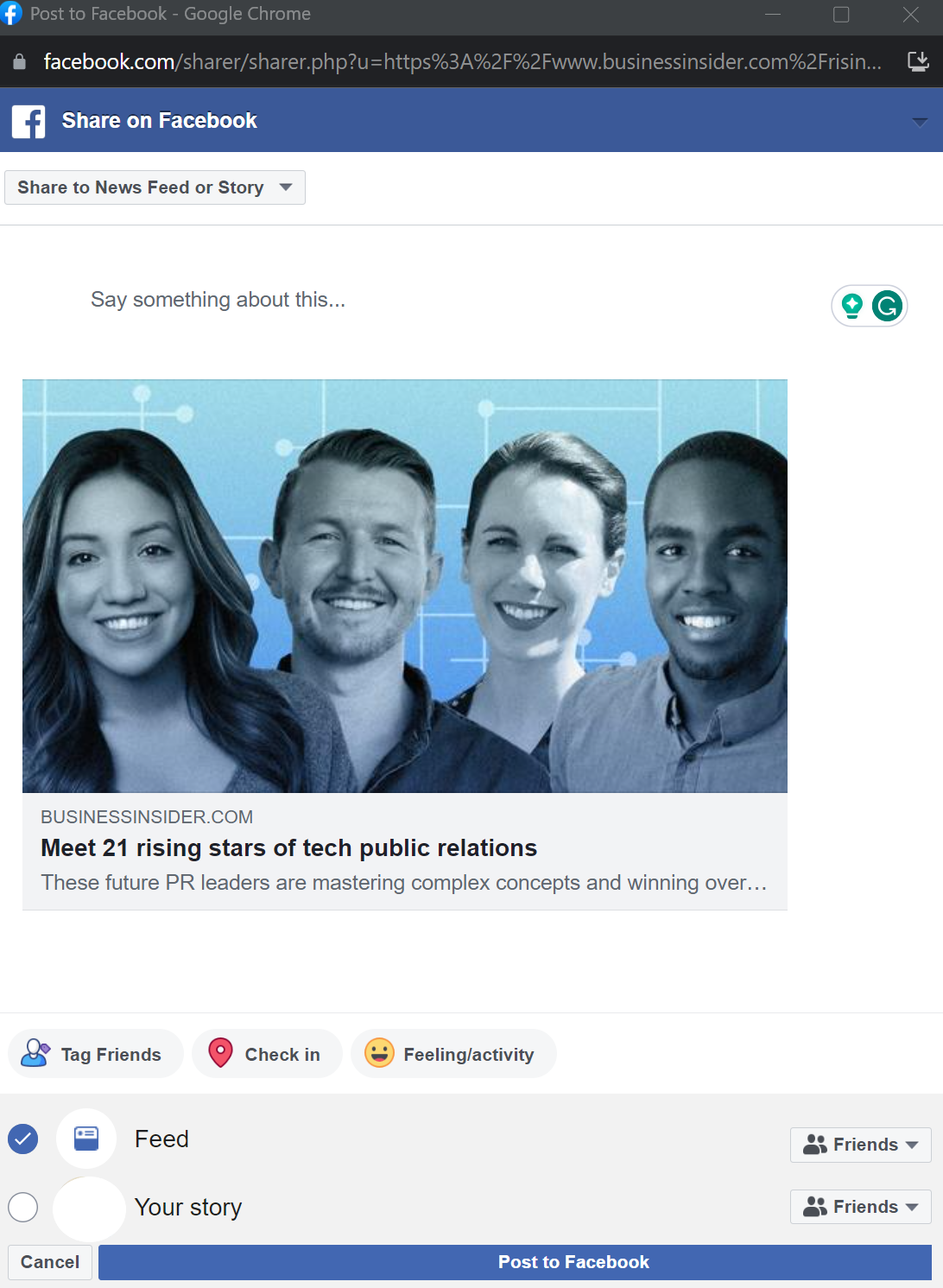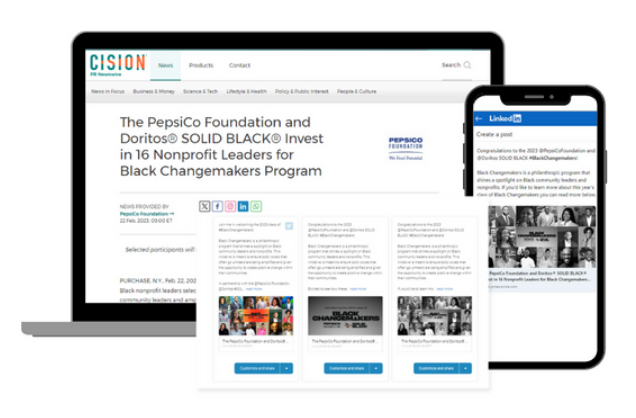Three Reasons Traditional 'Click to Share' Social Post Buttons Fall Short

Social media has become an integral part of our digital lives, serving as a powerful tool for individuals and businesses to share content and connect with others. However, despite the ubiquity of social media, achieving organic reach and engagement remains a challenge for many communicators. "Click to share" buttons on a piece of content are a helpful way to spread your message, but they have failed to achieve widespread adoption. We'll explore the challenges of traditional social sharing functionality and how to address these challenges.
A Brief History of the "Share" Icon
Web Developer Alex King created the "share" icon in 2006. Since then, share buttons have appeared on news articles, blog posts and press releases in different formats and with various on-page placement. Social share buttons enable users to post preformatted text or quotes from a piece of content directly to various social media platforms with a single click. Despite their ubiquity, it's fair to say that high engagement with social share buttons never caught on.
The most comprehensive study of user engagement with social share buttons to date was conducted by mobile optimization company Moovweb, which reported the following:
- Only .6% of desktop users clicked a social share button
- Merely .39% of mobile users tapped a social share button
So, why, after 17 years in existence, has the use of social sharing buttons been so low? While this feature has its merits, it also has several limitations that can hinder effective content sharing.
The Shortcomings of Traditional "Click to Share" Prompts
While well-intentioned, typical social share buttons have failed to generate engagement with readers. Lackluster adoption can be attributed to three significant shortcomings of traditional click-to-share:
- The User is Obligated to Craft the Post: Traditional social share buttons often generate a generic image preview and provide no suggested caption. As a result, users are left to craft their own social media posts, which can be time-consuming and may require creativity that not all users possess. This lack of guidance can lead to missed opportunities for engagement and may discourage users from sharing content altogether.
- Inconsistent Placement on Page: Social share buttons are often placed at the beginning of an article before the reader has consumed the content and determined if it's worth sharing. If they do enjoy the content, they'll need to scroll back up to the top (if they even remember to do so!) and click the button. Other times, social share buttons are inconspicuously placed at the bottom and are easy to ignore. Stranger still, social share buttons on some publishers' sites are stalking you as you scroll down the page. This lack of consistent page placement has led to a failure to routinize clicking-to-share behavior, even if the reader enjoys the content.
- Limited Platform Sharing Options: When social sharing buttons are embedded into a piece of content, the two most common platform offerings are Facebook and X, formerly known as Twitter. That's great news for users who are only looking to share content via those two platforms, but there are others your readers may prefer to use instead. LinkedIn, Instagram and Reddit are popular places for users to share content, yet many publishers don't offer these on their site. By limiting social sharing options to just Facebook and X, content distributors are leaving potential social shares on the table.
How to Empower Better Social Sharing
 With this in mind, at PR Newswire we wanted to address the limitations of traditional "click to share" by offering a more comprehensive and user-friendly solution for content sharing. With our new SocialBoost tool, users can choose from a selection of ready-made post suggestions, complete with engaging captions, relevant hashtags, and visually appealing images. These suggestions can be shared across LinkedIn, Instagram, Facebook, X and WhatsApp, giving users multiple choices for sharing your content and expanding its potential reach. Finally, SocialBoost buttons are strategically embedded in your press release right next to your multimedia eye candy where they are most likely to be seen.
With this in mind, at PR Newswire we wanted to address the limitations of traditional "click to share" by offering a more comprehensive and user-friendly solution for content sharing. With our new SocialBoost tool, users can choose from a selection of ready-made post suggestions, complete with engaging captions, relevant hashtags, and visually appealing images. These suggestions can be shared across LinkedIn, Instagram, Facebook, X and WhatsApp, giving users multiple choices for sharing your content and expanding its potential reach. Finally, SocialBoost buttons are strategically embedded in your press release right next to your multimedia eye candy where they are most likely to be seen.
SocialBoost also provides valuable insights into user engagement, allowing communicators to track and measure the impact of their shared content. This data-driven approach can inform future content creation and social media strategies, ultimately enhancing the effectiveness of content distribution.
The Takeaway
In short, while traditional "click to share" functionality offers a simple way to share content on various social media platforms, it falls short in several key areas, including posting guidance, platform diversity, and proper page placement that encourages engagement. SocialBoost addresses these shortcomings by providing a comprehensive and data-driven solution for content sharing across multiple social media platforms. By empowering users with ready-made post suggestions and valuable engagement insights, SocialBoost is helping to bridge the gap between communicators and their audiences.
See How PR Newswire Can Take Your Story to the Next Level
About the Author

Joe Rhoton, Senior Director of Strategy at Cision, is known for driving growth and operational efficiencies. With a history of advancing corporate strategy and bringing competitive products to market, Joe’s pragmatic approach has continually propelled business success.